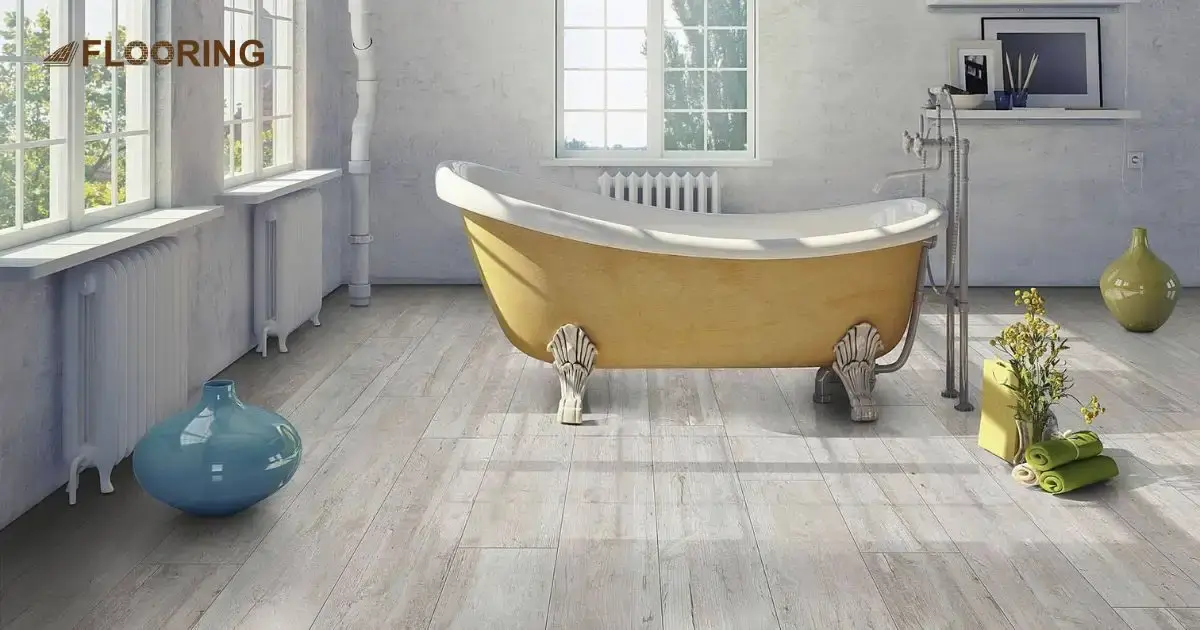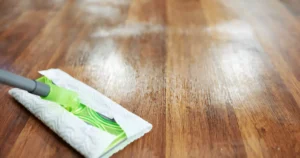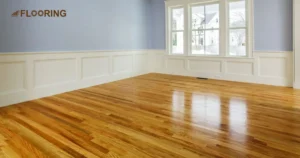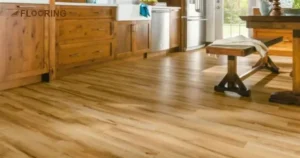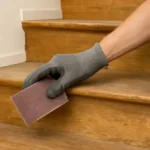Laminate flooring is a popular choice for many homeowners due to its affordability, durability, and ease of maintenance. Regarding bathroom renovations, laminate flooring is also an option that mimics the look of real wood while offering water resistance. Choosing the right bathroom laminate floor can transform your space into a stylish and functional oasis.
If you want to change the flooring of the bathroom and thinking about laminate floors, this might be a good solution for you. It combines the beauty of hardwood with the practicality needed for a bathroom. Not all laminate floors are made for bathrooms but some types are water-resistant and you can go with them.
Imagine the magic of bathroom laminate flooring just like the comfort and smoothness of the hardwood floors in the living room. In this article, we’ll discuss the types of laminate flooring, its benefits and advantages, comparisons with other popular options, and common problems. All these things will help you make an informed decision whether to go for it or not.
📑 Table of Content
Key Takeaways
- Laminate flooring offers an affordable yet stylish option for bathroom renovations, mimicking the elegance of hardwood while providing water resistance.
- Water resistant laminate flooring in bathroom is a budget-friendly alternative that can handle typical bathroom moisture and daily wear and tear.
- When selecting laminate for your bathroom, consider the moisture level, flooring thickness, and slip resistance to ensure durability and safety.
- With its affordability, ease of installation, and low-maintenance requirements, laminate offers excellent value for your bathroom renovation investment.
- Cleaning laminate floors in the bathroom is simple, requiring just regular sweeping and occasional mopping without special cleaners.
- Compared to tile, vinyl, and hardwood, laminate stands out for its water-resistant properties, ease of installation, and ability to mimic wood appearance.
- Choose between DIY installation for personal satisfaction and cost-savings or professional installation for expertise and peace of mind.
Why Choose Laminate for Your Bathroom?
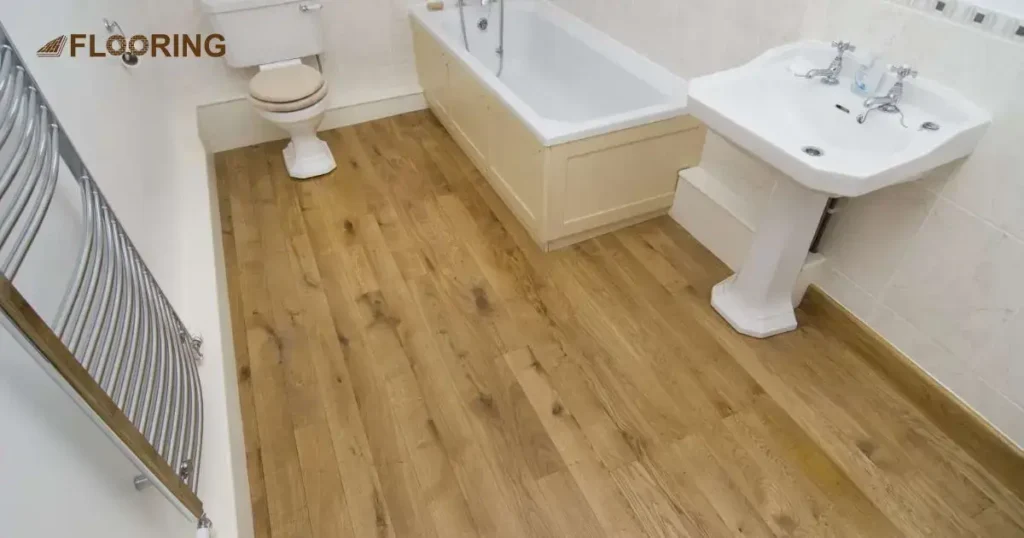
Choosing laminate flooring for your bathroom is a smart and stylish decision. Laminate flooring offers the beauty of hardwood without the high cost or worry about water damage. This makes it perfect for a bathroom where moisture can be a big issue. Imagine stepping into a bathroom that looks like a luxurious spa but is easy to clean and maintain.
Bathrooms are high-traffic areas, and you need a floor that can stand up to daily use. Laminate is tough and can resist scratches, dents, and wear, making it a long-lasting option. This flooring offers a combination of beauty, durability, affordability, and ease of maintenance, making it a better choice for the bathroom.
Types of Laminate Flooring Suitable for Bathrooms
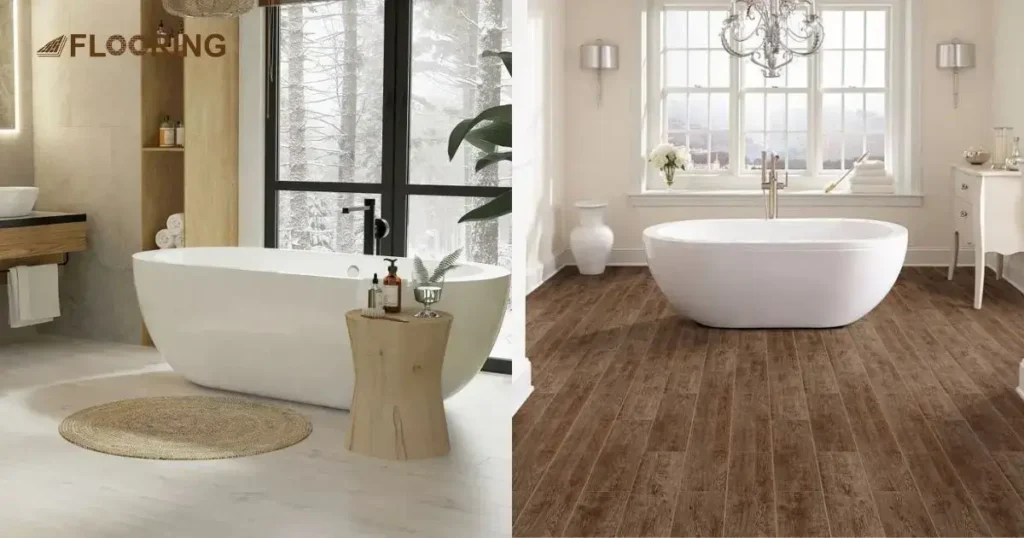
When choosing laminate flooring for your bathroom, it’s essential to understand the different types available. Two main types of laminate flooring are suitable for bathrooms: waterproof and water-resistant and each type has its unique benefits, making it easier to find the perfect fit for your needs.
Waterproof Laminate Flooring
Perfect for high-moisture environments: Waterproof laminate flooring is designed to withstand water without getting damaged.
Ideal for busy bathrooms: It is an excellent choice for bathrooms that see a lot of traffic and water splashes.
Peace of mind: You won’t have to worry about accidental spills or wet feet damaging your floor.
Stylish and practical: This type of laminate offers the beauty of real wood while providing top-notch water resistance.
Long-lasting protection: Waterproof laminate ensures your bathroom floor remains in great condition for many years.
Water-Resistant Laminate Flooring in Bathroom
Handles everyday moisture: Water-resistant laminate flooring can manage typical bathroom moisture without any issues.
Budget-friendly option: It’s a more affordable choice compared to waterproof laminate, yet still effective for bathroom use.
Durable for daily use: This flooring type can handle the daily wear and tear of a bathroom environment.
Simple maintenance: Keeping water-resistant laminate clean is easy, requiring just regular sweeping and mopping.
Versatile designs: Water-resistant laminate comes in various styles, allowing you to achieve the look you desire for your bathroom.
How to Choose the Right Laminate Flooring for Your Bathroom?
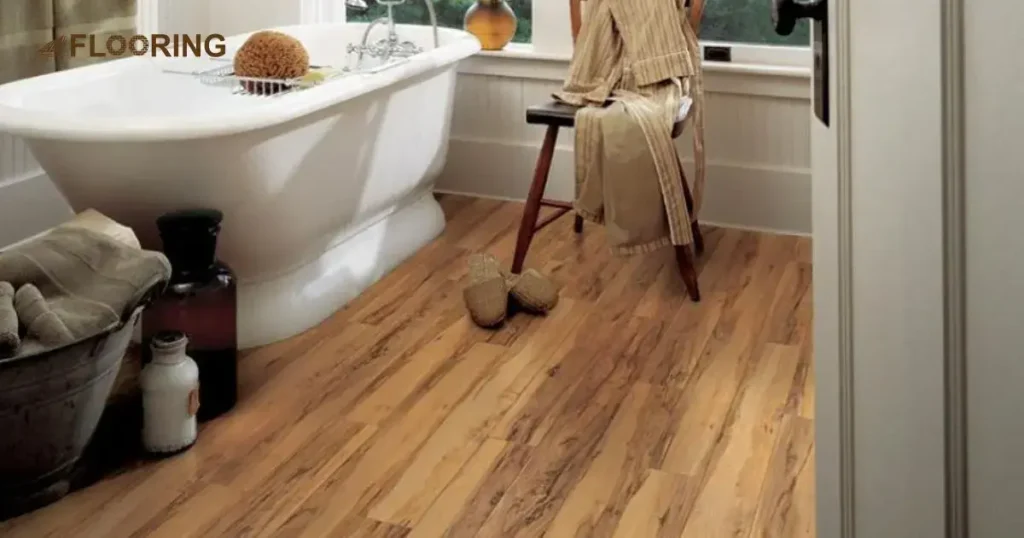
Selecting the right laminate flooring for your bathroom is crucial for ensuring durability and style. With several factors to consider, making an informed decision can transform your bathroom into a beautiful and functional space, keep these key aspects in mind:
Consider the Moisture Level
The amount of moisture your bathroom experiences daily plays a significant role in your flooring choice. For high-moisture bathrooms, opt for waterproof laminate to prevent damage.
Even in bathrooms with less moisture, water-resistant laminate provides enough protection and is a reliable choice. Considering moisture levels helps you select flooring that maintains its beauty and functionality over time.
Check the Flooring Thickness
Thicker laminate flooring tends to be more durable and comfortable underfoot. For bathrooms, choose laminate that is at least 8mm thick for added strength. While thicker flooring might cost more, it offers better resistance to wear and tear. Thicker laminate also provides better sound insulation and a more solid feel.
Look for Slip-Resistance
Bathrooms can be slippery, so choose laminate flooring with a textured surface to reduce slip risks. Look for flooring that specifically mentions slip resistance or has a textured finish. Slip-resistant flooring is especially important in households with children or elderly members. Knowing your bathroom floor is safe can help you feel more at ease, especially during busy mornings.
Benefits of Bathroom Laminate Flooring
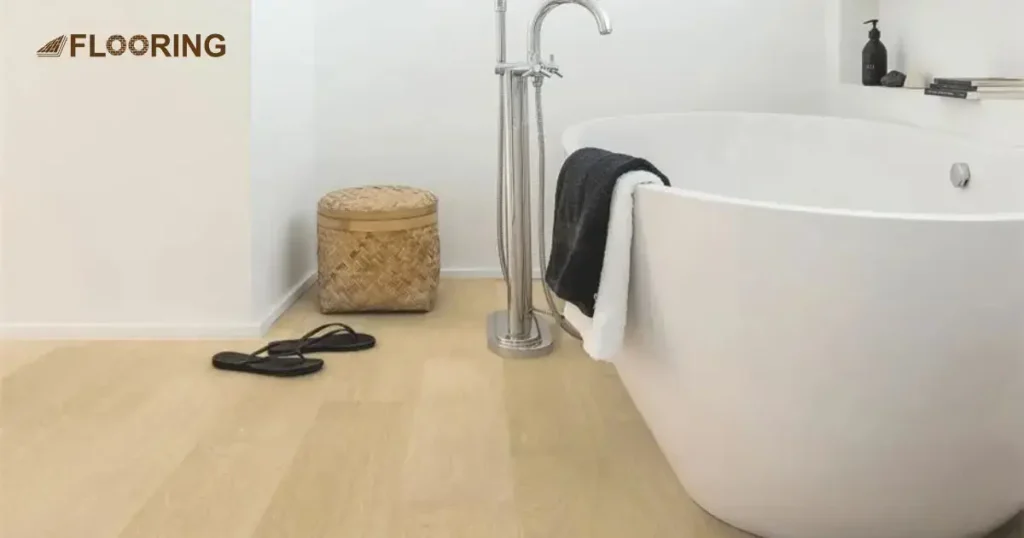
Choosing laminate flooring for your bathroom offers several significant benefits. It provides a blend of practicality, affordability, and style that makes it an excellent choice for any home. Let’s explore these advantages in detail.
Durability
- Laminate flooring is designed to withstand high foot traffic, making it perfect for busy bathrooms.
- Its tough, protective layer helps prevent scratches and dents from everyday use.
- Although not completely waterproof, many laminate options offer good resistance to moisture, protecting against spills and humidity.
- With proper care, laminate flooring can last many years, providing value and longevity.
- It retains its look over time, avoiding the fading and discoloration that can affect other types of flooring.
- The layered construction of laminate adds to its strength and resilience, ensuring it stays intact even in challenging conditions.
Affordability
- Laminate flooring is generally less expensive than hardwood or tile, making it a budget-friendly option.
- Despite its lower cost, laminate can mimic the look of more expensive materials, offering a high-end appearance.
- It’s easier and quicker to install than many other types of flooring, reducing labor expenses.
- Its durability means fewer repairs or replacements over time, saving you money in the long run.
- Combining affordability with durability and style, laminate flooring offers excellent value for your investment.
Easy Maintenance
- One of the outstanding benefits of bathroom laminate flooring is its comfort of maintenance and cleaning.
- Cleaning is simple, requiring just regular sweeping and occasional mopping and you don’t need special cleaners or treatments to keep it looking great.
- This low-maintenance nature is ideal for busy households, where time for extensive cleaning routines is limited.
- Laminate flooring resists stains and spills, so you can quickly wipe up any accidents without worry.
- Its smooth surface doesn’t trap dust or dirt, contributing to a cleaner and healthier bathroom environment.
Comparing Laminate Flooring with Other Bathroom Flooring Options
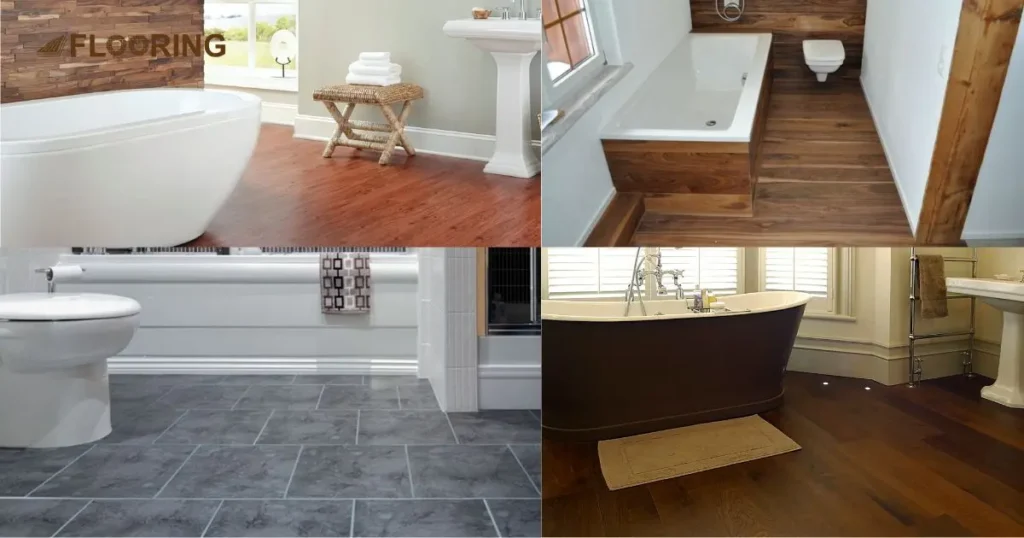
When choosing flooring for your bathroom, it’s essential to compare the benefits and drawbacks of various options. Let’s see how laminate flooring stacks up against tile, vinyl, and hardwood.
Laminate vs Tile
| Laminate Flooring | Tile Flooring |
| Easier to install | More complex installation |
| Warmer underfoot | It can be cold and hard |
| More affordable | Often more expensive |
| Water-resistant options | Generally waterproof |
| Simulates wood appearance | Available in various designs |
| Less durable in standing water | Extremely durable |
| Softer surface | Harder, more durable surface |
| Easier to replace damaged sections | More difficult to replace damaged sections |
Laminate vs Vinyl
| Laminate Flooring | Vinyl Flooring |
| It looks like real wood | Can mimic wood, stone, or tile |
| More rigid | More flexible |
| Easier to install as a DIY project | Also easy to install |
| Generally more affordable | It can be equally affordable |
| Water-resistant options | Waterproof options available |
| Warmer underfoot | Cooler underfoot |
| Slightly less durable in high moisture | Highly durable in moisture |
| Easier to replace sections | Also easy to replace sections |
Laminate vs Hardwood
| Laminate Flooring | Hardwood Flooring |
| More affordable | Expensive |
| Easier to install | Complex installation |
| Water-resistant options | Not water-resistant |
| Mimics wood appearance | Genuine wood appearance |
| Less maintenance | Requires regular maintenance |
| Durable surface | Can be easily scratched or dented |
| Cooler underfoot | Warmer underfoot |
| Easier to replace sections | It can be easily scratched or dented |
By comparing laminate flooring with tile, vinyl, and hardwood, you can see that each option has its unique advantages. Laminate flooring stands out for its affordability, ease of installation, and water-resistant properties, making it a great choice for many bathrooms.
Common Problems and Solutions for Bathroom Laminate Flooring
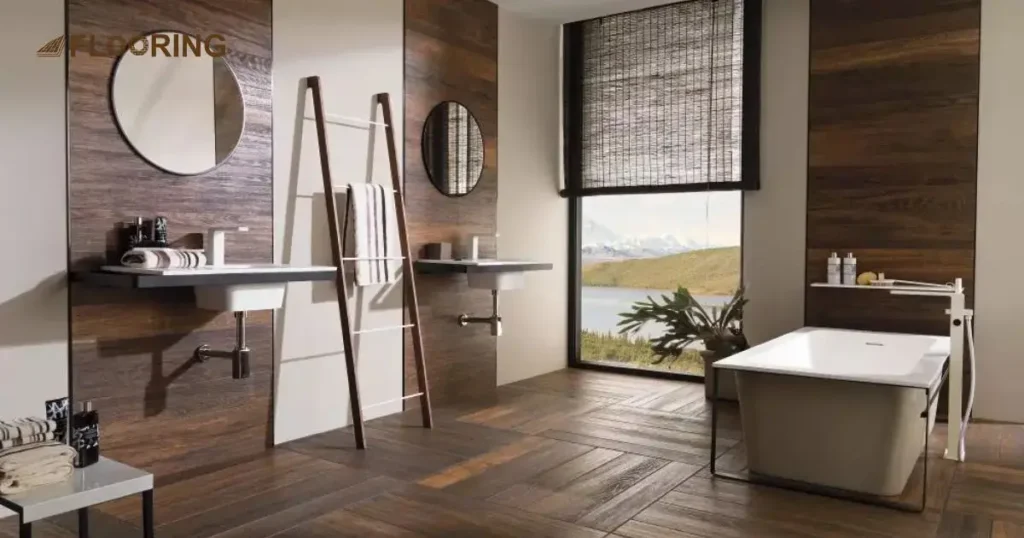
Even though laminate flooring is a fantastic choice for bathrooms, it can encounter a few issues. Understanding these common problems and their solutions can help you maintain your bathroom laminate floor’s beauty and functionality.
Handling Water Damage for Bathroom Laminate Floor
Water damage is a significant concern for any bathroom floor, if water seeps into the seams of laminate flooring, it can cause swelling and warping. To handle water damage, act quickly by wiping up spills immediately and using a dry cloth to soak up excess moisture.
Consider using waterproof bathroom laminate flooring with high moisture levels to prevent this issue. If the damage is extensive, you might need to replace the affected planks. Regularly check the caulking around the edges to ensure no water seeps underneath the flooring.
Fixing Scratches and Dents
Scratches and dents can occur in high-traffic areas of your bathroom and to fix minor scratches, use a laminate floor repair kit available at most hardware stores. These kits include colored putty that matches your floor, making the scratches less noticeable. But, for deeper dents, you might need to replace the affected planks.
Place felt pads under furniture legs and avoid dragging heavy objects across the floor to prevent future damage. Regular maintenance and careful handling of bathroom fixtures can minimize the risk of scratches and dents.
Addressing Warping Issues
Warping can happen when laminate flooring is exposed to prolonged moisture or if it’s installed incorrectly. To address the warping of laminate flooring, first, identify and eliminate the moisture source because this could be a leaky pipe or inadequate ventilation. Remove the warped planks and allow them to dry thoroughly, if they do not return to their original shape, replace them with new ones.
Ensure your bathroom is well-ventilated to prevent moisture build-up, and always follow the manufacturer’s installation guidelines to avoid future warping issues.
DIY vs Professional Installation – Which is Better?

Choosing between DIY installation and hiring a professional for your laminate floor bathroom can be challenging. Both options have their benefits and drawbacks and understanding these can help you make an informed decision that suits your needs and budget.
| DIY Installation | Professional Installation |
| Lower cost | Higher costs due to labor fees |
| Personal satisfaction | Professional expertise |
| Flexible schedule | Faster completion time |
| Requires tools and equipment | No need to purchase tools |
| Learning curve involved | Guaranteed quality |
| Possible mistakes | Fewer installation errors |
| More time-consuming | Saves your time |
| Full control over the project | Less hassle and effort |
| Ideal for small projects | Better for complex installations |
| Sense of achievement | Peace of mind with warranties |
When considering the DIY installation of a laminate floor for bathroom, think about your skill level and available time. While it can be rewarding and cost-effective, it might also be more challenging and time-consuming.
On the other hand, professional installation offers expertise and peace of mind, ensuring a flawless finish, but at a higher cost. Decide which option aligns best with your priorities and capabilities for the perfect bathroom laminate floor installation.
Frequently Asked Questions
Is vinyl or laminate better for bathroom?
Vinyl is generally better for bathrooms because it is completely waterproof and more durable against moisture. Laminate, while water-resistant, can be damaged by standing water over time.
Do you need underlay for bathroom laminate?
Yes, underlay is necessary for bathroom laminate to provide a moisture barrier and additional insulation. It also helps to reduce noise and improve comfort underfoot.
Where should you not use laminate flooring?
Laminate flooring should not be used in areas with high moisture or humidity, like saunas, laundry rooms, or outdoor spaces. These environments can cause the laminate to warp or swell.
Will urine ruin laminate flooring?
Yes, if urine is not cleaned up quickly, it can seep into the seams and cause damage. Prolonged exposure to moisture can lead to warping and staining of the laminate flooring.
Do you have to remove a toilet to install laminate flooring?
Yes, it’s usually necessary to remove the toilet to properly install laminate flooring around it. This ensures a seamless fit and prevents moisture from seeping underneath.
What is the best waterproof flooring for a bathroom?
The best waterproof flooring for a bathroom is often vinyl, especially luxury vinyl planks or tiles. These options are fully waterproof, durable, and come in a variety of designs.
How long does bathroom laminate flooring last?
With proper care and maintenance, bathroom laminate flooring can last between 10 to 15 years, but its lifespan can be shorter in high-moisture environments without proper protection.
Conclusion
Bathroom laminate flooring ideas offer a perfect blend of style and practicality. With its ability to mimic the warmth and elegance of wood benefits, this flooring brings a touch of luxury to your bathroom sanctuary. Imagine creating a spa-like ambiance in your bathroom without the worry of water damage or excessive maintenance.
The ease of installation and low maintenance requirements make bathroom laminate floor a hassle-free choice for busy households. Envision the joy of stepping onto a beautiful, durable floor that transforms your bathroom into a relaxed retreat. With its versatility and timeless appeal, bathroom laminate flooring is the model of a smart and stylish investment for your home.
